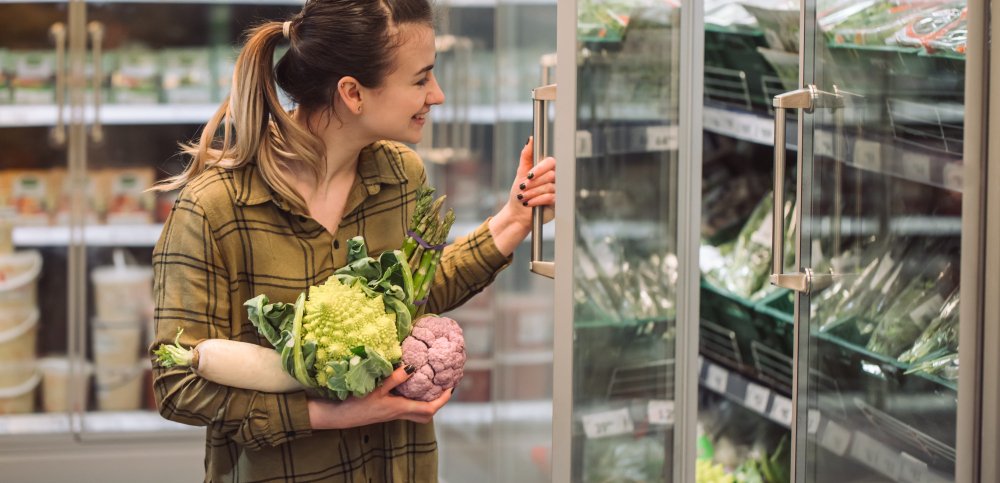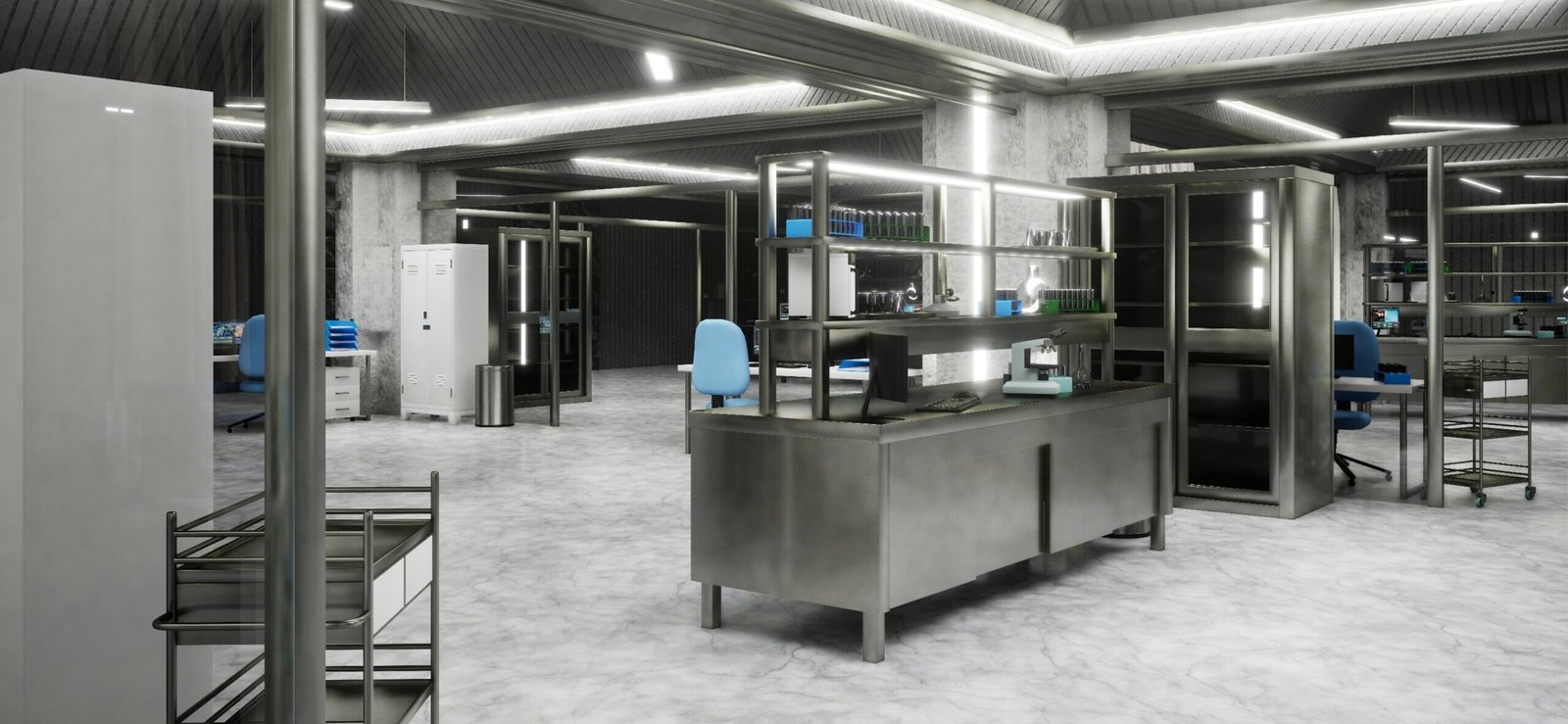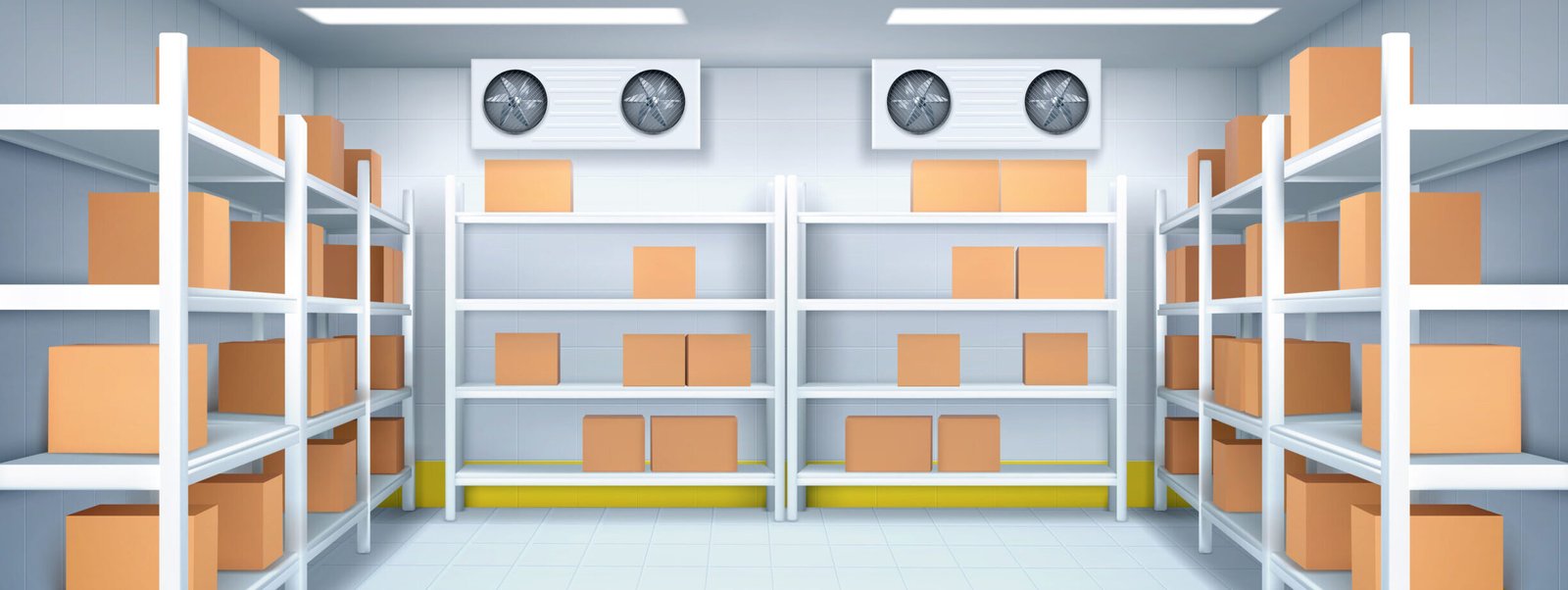Table des matières
ToggleUne chambre froide est un complément ou un remplacement idéal de votre équipement de réfrigération, capable de stocker de grandes quantités d'aliments et d'ingrédients tout en étant économe en énergie.
En tant qu'experts en chambres froides et en réfrigération, nous pouvons inspecter votre installation, vous fournir l'équipement nécessaire et l'installer. Avant d'acheter, vous devez connaître certaines considérations et informations clés pour vous assurer que votre chambre froide est adaptée à votre entreprise.
1. Qu'est-ce qu'une chambre froide ?
A chambre froide est un espace isolé et réfrigéré conçu pour maintenir une température fixe. Elles sont utilisées dans les cuisines professionnelles pour le stockage des aliments, car elles peuvent contenir de grandes quantités de produits et sont disponibles en différentes tailles, de la petite glacière à l'entrepôt. Elles sont aussi parfois appelées glacières "walk-in".
Contrairement à d'autres équipements de réfrigération commerciale, les chambres froides ne peuvent pas être déplacées. Elles doivent être installées par des professionnels comme nous.

2. À quoi sert une chambre froide ?
Les chambres froides ont un large éventail d'utilisations, principalement pour le stockage en vrac de produits nécessitant des températures spécifiques. Les produits qui peuvent être stockés dans une chambre froide sont les suivants :
(A). Produits frais : légumes, fruits, produits laitiers et viandes.
(B). Aliments préparés : aliments préparés pour les restaurants et les cafés, ou sandwichs et repas préparés pour les magasins de détail.
(C). Aliments surgelés : viande, produits frais, crème glacée et pain.
(D). Aliments végétaux : plantes et fleurs
(E). Boissons : maintenir la qualité ou assurer la température idéale de consommation.
(F). La polyvalence des réfrigérateurs et des congélateurs leur permet de répondre à de nombreux besoins commerciaux, et la liste est infinie.
3. Quelles sont les caractéristiques essentielles d'une chambre froide ?
Une chambre froide peut nécessiter plusieurs éléments supplémentaires pour améliorer son efficacité et son fonctionnement quotidien :
(A). Dégivrage : La plupart des chambres froides sont équipées d'un système de dégivrage automatique avec dégivrage actif.
(B). Sortie de secours : Toutes les chambres froides modernes sont équipées d'un bouton intérieur qui déverrouille la porte et sert de sortie de secours. Certaines chambres peuvent également être équipées d'un bouton d'urgence.
(C). Éclairage : L'éclairage intérieur est généralement standard, automatique ou manuel.
(D). Accès au chargement : Si vous utilisez des chariots pour charger les marchandises, vous pouvez construire une rampe. Cela réduit le risque de trébucher en raison du cadre de porte surélevé.
(E). Mode économie d'énergie : Les portes sont parfois dotées d'un mécanisme de fermeture automatique qui permet de réduire les coûts d'exploitation.
4. Pourquoi utiliser une chambre froide ?
Une chambre froide est idéale lorsque vous avez besoin de capacités de réfrigération et de congélation puissantes et fiables, car elle permet un contrôle précis de la température de vos aliments.
Ils offrent de nombreux avantages par rapport aux réfrigérateurs et congélateurs traditionnels, en particulier si vous avez un stock important.
(A). La chambre froide offre plus d'espace de stockage
Les glacières mobiles offrent un vaste espace de stockage et, en raison de leur grande capacité, leurs coûts d'exploitation sont nettement inférieurs à ceux des unités de réfrigération plus petites. Il n'est pas nécessaire d'acheter et d'entretenir plusieurs unités de réfrigération.
(B). La chambre froide permet de gagner de l'espace
Vous pouvez placer une glacière à l'intérieur ou à l'extérieur, libérant ainsi de l'espace dans la cuisine pour le matériel de cuisson et de préparation des repas. Cette solution est idéale pour les petites cuisines, mais si votre cuisine est à l'extérieur, vous aurez besoin d'un toit résistant aux intempéries.
(C). La chambre froide vous aide à organiser vos marchandises
Les aliments stockés sur des étagères sont plus faciles à organiser et à trouver que les autres types de stockage. Ils facilitent également le réapprovisionnement.

(D). La chambre froide est plus sûre
La plupart des modèles sont équipés de dispositifs de sécurité pour éviter les dommages et les vols. Les glacières mobiles sont bien situées et faciles à utiliser, ce qui facilite le réapprovisionnement et l'accès aux ingrédients.
(E). Le stockage en chambre froide permet d'économiser de l'électricité et de l'énergie.
Les glacières mobiles sont conçues pour réduire les fluctuations de température, ce qui nécessite moins d'énergie pour réguler la température pendant l'utilisation.
5. Éléments à prendre en compte avant d'acheter une chambre froide
Avant d'acheter une chambre froide de plain-pied, vous devez tenir compte des facteurs clés suivants :
(A). Choisir la capacité d'une chambre froide en fonction de vos besoins
Votre chambre froide peut fonctionner comme un réfrigérateur ou un congélateur de type "walk-in", et certains modèles peuvent même fonctionner à la fois comme un réfrigérateur et un congélateur. Le choix de la chambre froide de type "walk-in" la mieux adaptée à votre entreprise dépendra de vos besoins.
(B). Les chambres froides nécessitent des rayonnages
Votre inventaire sera stocké sur des étagères afin d'en faciliter l'accès et de maximiser l'espace de stockage. Les rayonnages sont généralement vendus séparément et peuvent être configurés en fonction de vos besoins.
(C). Protégez votre chambre froide de l'humidité et de l'acidité
En raison de l'environnement difficile des chambres froides, les acides provenant des aliments, l'humidité et l'utilisation fréquente peuvent entraîner la rouille ou la détérioration des rayonnages. Il est donc essentiel de choisir des rayonnages durables en PVC ou en aluminium anodisé.
(D). Choisir la bonne température
Vous devez connaître la température ambiante de votre chambre froide. La température ambiante maximale correspond à la température la plus élevée à laquelle la chambre froide peut fonctionner sans affecter la température interne. La plupart des chambres froides peuvent fonctionner jusqu'à 32°C, mais si vous avez besoin d'une température ambiante plus élevée, vous pouvez choisir une chambre froide plus robuste.
(E). Les entrepôts frigorifiques doivent être ventilés.
Vous devez également tenir compte de la ventilation, car les chambres froides ont besoin d'un grand espace autour de l'équipement pour permettre le transfert de la chaleur vers l'extérieur. Si votre chambre froide est installée à l'intérieur, tenez compte des autres installations qui s'y trouvent et de leur influence éventuelle sur les performances. Les chambres froides ne doivent pas être installées dans des espaces confinés, car elles risquent de ne pas disposer d'une ventilation suffisante pour maintenir la bonne température.
Avant de partir
Si vous avez besoin d'aide pour choisir la meilleure solution de chambre froide pour votre entreprise ou vos clients, n'hésitez pas à nous contacter. Notre équipe de vente expérimentée sera heureuse de vous aider.






